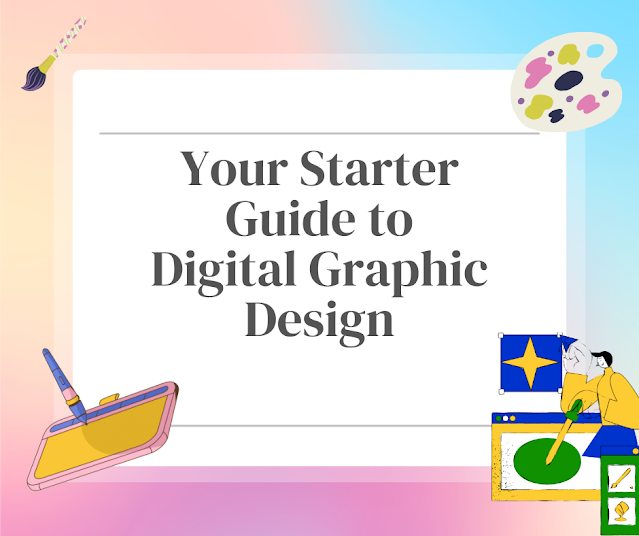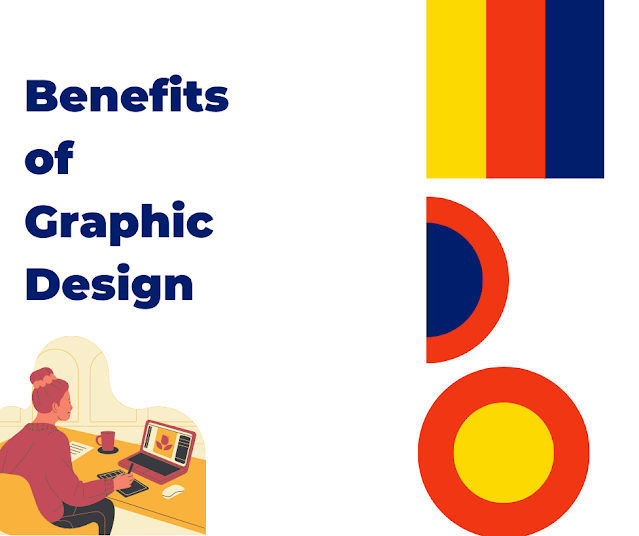Skills in Graphic Design
Graphic design is the art and practice of visually communicating ideas, information, and messages using a combination of typography, images, colors, and layout techniques. It involves the creative process of conceptualizing, designing, and arranging visual elements to effectively convey a specific message or evoke a desired response.
Graphic designers utilize their artistic skills, technical knowledge, and creativity to create visually appealing and engaging designs for various mediums, including print and digital platforms.
If you want to learn about graphic design it would be best to take a course. If you are looking for an institute for Graphic Design courses in Delhi then checkout Jeetech Academy they are one of the best institutes in Delhi
Importance of Graphic Design in Various Industries
Graphic design holds significant importance across a wide range of industries and sectors. It plays a crucial role in visually capturing attention, conveying information, and establishing brand identities.
The key reasons why graphic design is important are as follows:
In Advertising and Marketing: Graphic design is vital for creating visually compelling advertisements, promotional materials, and marketing campaigns. By using captivating visuals and strategic design elements, graphic designers help businesses and organizations effectively communicate their messages, attract customers, and promote their products or services.
In Branding and Identity: Graphic design is instrumental in establishing and enhancing a brand's identity. Design elements such as logos, color schemes, typography, and visual consistency across various marketing materials contribute to creating a recognizable and memorable brand image. Graphic designers work closely with businesses to develop visually cohesive brand identities that reflect the values, personality, and essence of the brand.
In Web Design and User Experience (UX): With the increasing importance of online presence, graphic design plays a crucial role in web design and user experience. Graphic designers create visually appealing website layouts, intuitive user interfaces, and engaging graphics that enhance user interactions and create a positive user experience. Effective graphic design helps in communicating information efficiently, guiding users through the website, and establishing a strong online presence.
In Print and Publishing: Graphic design is essential in the world of print and publishing. It is used in designing magazines, books, brochures, posters, and other printed materials. Graphic designers utilize their skills to arrange text, images, and other visual elements in a visually pleasing and readable format. They play a significant role in enhancing the overall presentation and readability of the content, making it more engaging and impactful.
In Packaging Design: Graphic design is critical in product packaging. The packaging design is often the first point of contact between a product and a consumer. Graphic designers create packaging designs that not only catch the attention of potential customers but also communicate the product's features, benefits, and brand identity. Effective packaging design helps products stand out on store shelves and influences consumer buying decisions.
In all, graphic design is a versatile and impactful discipline that plays a crucial role in various industries. It involves the creative use of visual elements to communicate messages, establish brand identities, enhance user experiences, and create visually appealing designs across both print and digital mediums.
Essential Graphic Design Skills
Creativity and Visual Thinking: The ability to think creatively and visually is fundamental in graphic design. It involves coming up with unique and innovative design ideas, exploring different perspectives, and thinking outside the box. Creative thinking allows designers to approach projects with fresh ideas, create visually captivating designs, and solve design problems effectively.
Understanding Color Theory and Composition: Color theory is the study of how colors interact and impact visual perception. Graphic designers need to understand color harmonies, color psychology, and how to effectively use colors to evoke specific emotions or convey messages. Additionally, knowledge of composition principles such as balance, contrast, and focal points helps designers create visually balanced and aesthetically pleasing designs.
Typography and Font Selection: Typography is the art of arranging and selecting typefaces to enhance readability, convey information, and evoke a specific mood or style. Graphic designers must have a good understanding of typography, including font families, typeface combinations, kerning, and tracking. They should be able to select appropriate fonts that align with the design's purpose and effectively communicate the intended message.
Layout and Visual Hierarchy: Layout refers to the arrangement of visual elements on a page or screen. Graphic designers need to understand the principles of layout design, including grid systems, alignment, and proportion. They should be able to create visually pleasing compositions that guide the viewer's eye and communicate information in a clear and organized manner. Visual hierarchy helps designers prioritize and emphasize important elements to create a focal point and guide the viewer's attention.
Use of Negative Space: Negative space, also known as white space, refers to the empty space around and between design elements. It is an essential design element that helps create balance, enhance readability, and bring focus to key elements. Understanding how to effectively use negative space allows designers to create clean and uncluttered designs, improve visual impact, and create a sense of elegance and sophistication.
By developing these essential graphic design skills, designers can create visually appealing and impactful designs that effectively communicate messages, evoke emotions, and engage viewers. These skills provide a strong foundation for a successful career in graphic design.
Software and Tools for Graphic Design
When it comes to graphic design software, there are several popular options that designers rely on.
Adobe Photoshop, Illustrator, and InDesign are widely recognized and utilized in the industry.
Photoshop is primarily used for image editing and manipulation, allowing designers to enhance photos and create stunning visuals. Illustrator is renowned for its vector-based capabilities, making it ideal for creating logos, illustrations, and scalable graphics. InDesign is a powerful tool for layout design, perfect for creating print materials such as brochures and magazines.
While Adobe's software is dominant, there are also alternative tools and online platforms available. Canva, for instance, offers an intuitive interface and a wide range of design templates suitable for various projects.
Figma is a collaborative design tool that enables teams to work together on web and UI design projects. Affinity Designer and CorelDRAW are other notable alternatives to consider.
Understanding the features and functionalities of design software is essential for efficient and effective design work.
Design software typically includes tools for selecting and manipulating elements, creating and editing shapes, applying effects, managing layers, and exporting files. Learning and mastering these features empower designers to execute their creative visions and produce professional-quality designs. Whether you choose popular software or explore alternative tools, gaining proficiency in design software will significantly enhance your graphic design capabilities.
Conclusion:
Mastering essential graphic design skills is crucial for becoming a successful and effective designer. Throughout this blog post, we have highlighted some key skills that every graphic designer should possess. These skills include creativity and visual thinking, understanding color theory and composition, typography and font selection, layout and visual hierarchy, and the use of negative space.. These skills are the building blocks of effective design.
.png)
.jpg)



Comments
Post a Comment